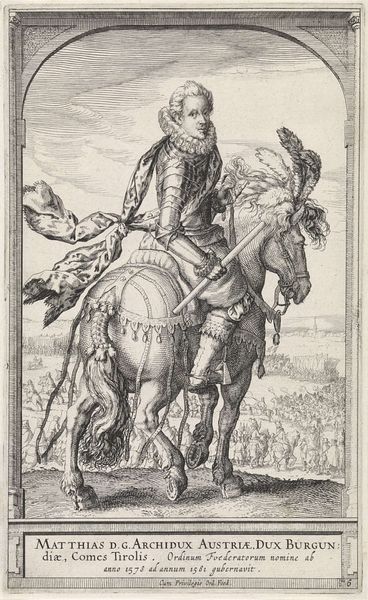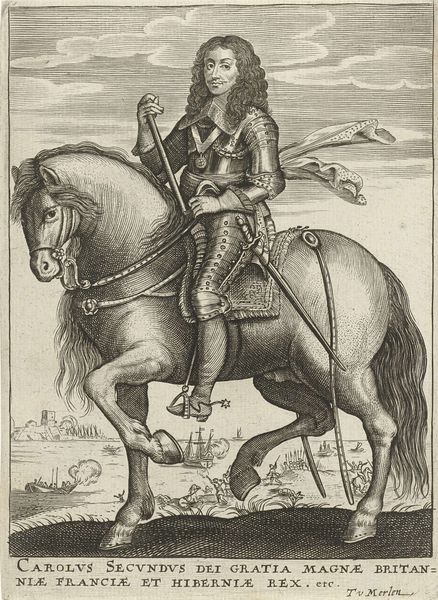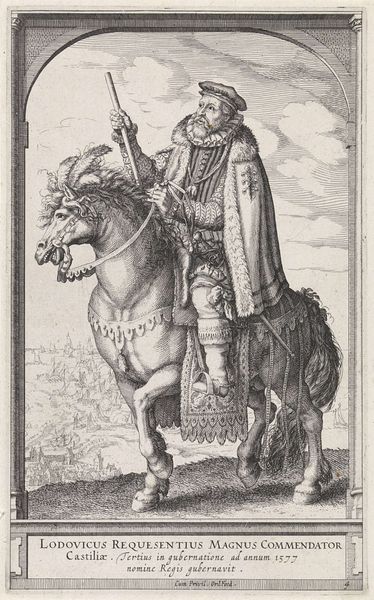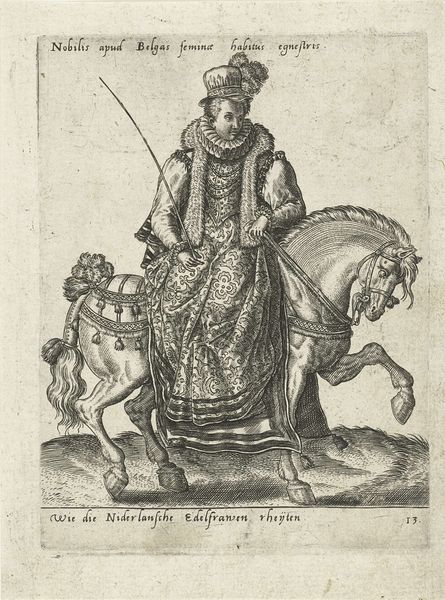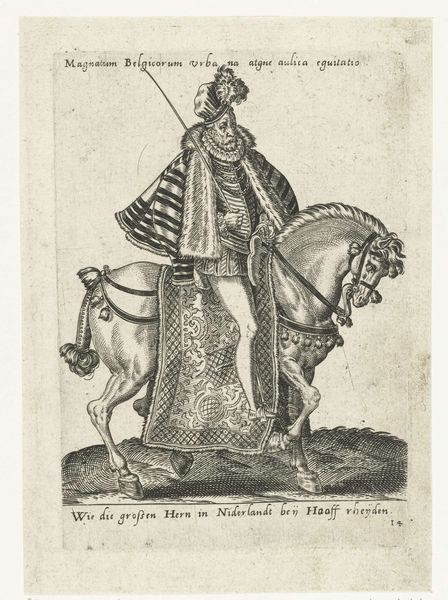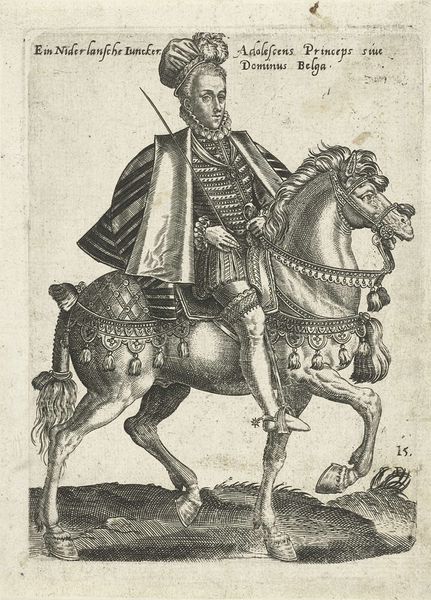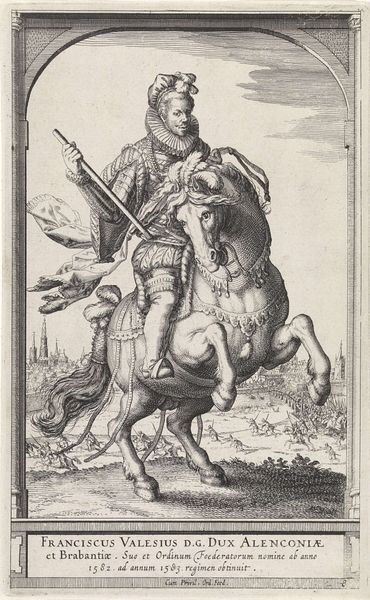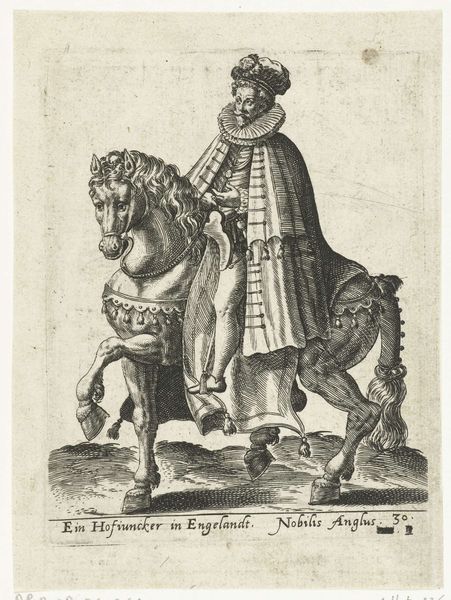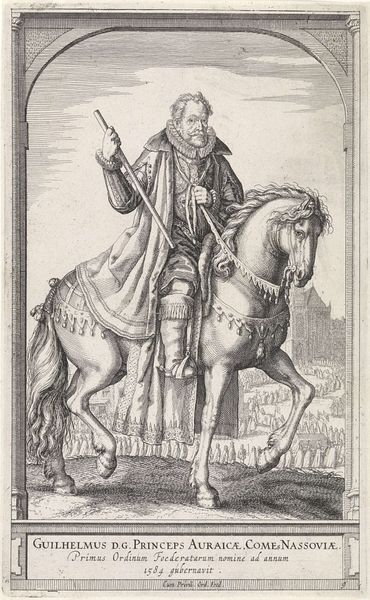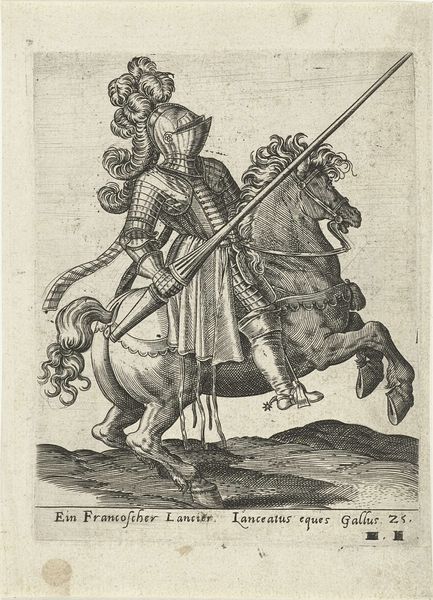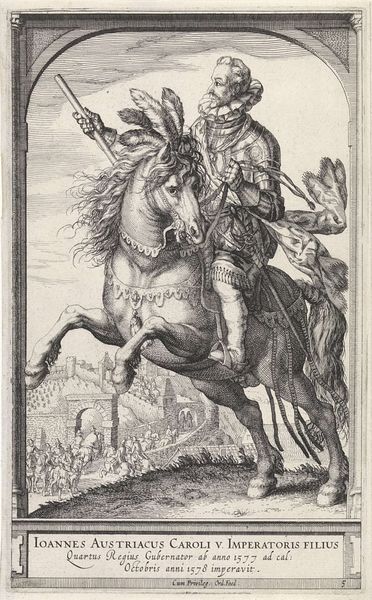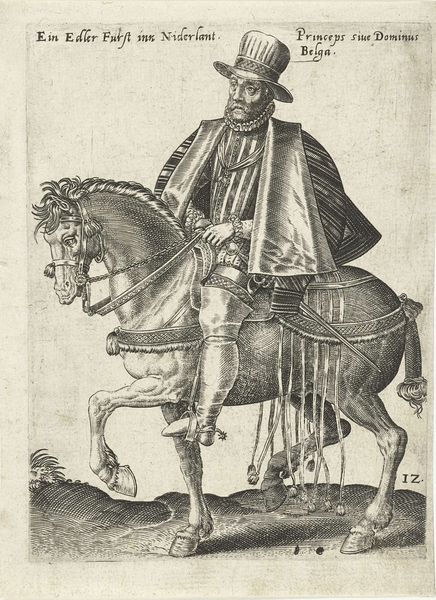
print, metal, engraving
#
portrait
#
baroque
# print
#
metal
#
old engraving style
#
figuration
#
11_renaissance
#
line
#
portrait drawing
#
history-painting
#
academic-art
#
engraving
Dimensions: width 158 mm, height 259 mm
Copyright: Rijks Museum: Open Domain
Editor: Here we have Hessel Gerritsz’s "Equestrian Portrait of Philip II," a print made sometime between 1591 and 1632. The detail is amazing. What strikes me is how posed and symbolic everything feels. What do you see in this piece, beyond the immediately obvious? Curator: This engraving offers us a lens through which to examine power, representation, and the complexities of historical narratives. Consider Philip II, not just as a regal figure, but as a symbol of Spanish imperialism and its devastating impact. What stories are intentionally left untold? Editor: I see what you mean. He looks so dignified and powerful, but the history is so much more complicated than that. All of that wealth and power was built on, you know, *things*. Curator: Exactly. How does this image, likely commissioned or at least approved by those in power, serve to legitimize his rule? Think about the visual language—the horse, the clothing, even the ships in the background. Editor: Those ships! It’s easy to miss them. So it’s a message about colonial power as much as about the man himself. Curator: Precisely. And it’s vital to remember this image circulated during a time of intense conflict and political upheaval, especially in the Netherlands. Whose perspective is privileged, and whose is silenced by this portrait? What kind of dialog could exist in response to such silencing? Editor: It’s almost like propaganda, but presented as art. The more I look, the more loaded it seems. I hadn’t considered how selective these portrayals are, before now. Curator: Indeed. Art is never neutral. By critically engaging with works like this, we can unearth these layers of meaning and better understand the power dynamics that shaped our world, both in the past and continuing in the present. What we’ve seen is about power. Editor: That’s given me a lot to think about. Thanks. I’ll never look at another portrait the same way.
Comments
No comments
Be the first to comment and join the conversation on the ultimate creative platform.
